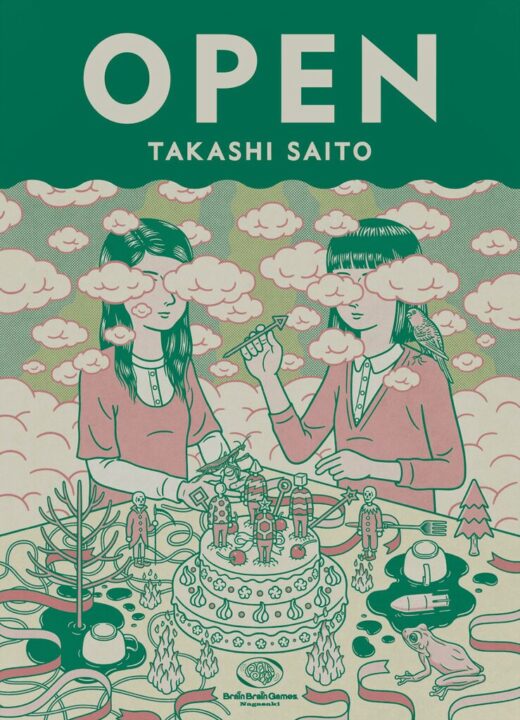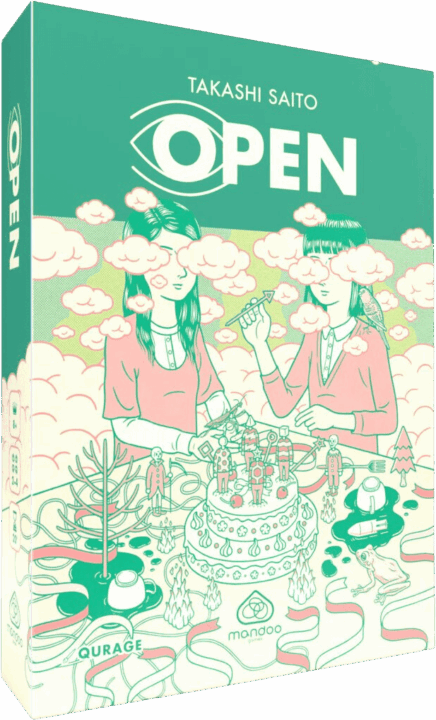Hey folks! Today, we’re tackling a fun review of the board game Open. Trust me, after hours of playing with my friends, I’ve got some juicy details to share. From its rich player interactions to those thrilling risk-reward choices, this game has a lot going on. So, buckle up and get ready for an honest, entertaining, and slightly goofy take on Open!
How It Plays
Setting up
First, shuffle the deck of cards and place it in the middle. Each player gets a player board and a set of tokens. Arrange the modular board according to the scenario you picked. Trust me, it’s like a puzzle!
Gameplay
Players take turns drawing a card and making choices. You can move, trade, or attack. Be wise, though, because choices can haunt you! You can also use special abilities and interact with the board. Some decisions hinge on dice rolls, adding that element of chance that can mess with your plans.
Winning the game
The game ends when a player completes their secret mission or when a certain number of rounds are over, whichever happens first. Check who’s got the most points or achieved their goal first. They’re the winner! But beware – it’s not always the one who screams victory the loudest.
Want to know more? Read our extensive strategy guide for OPEN.
Game Mechanics and Rules: A Peek Inside ‘Open’
Understanding game mechanics and rules is key to whether a game is fun or not. When I cracked open the box of ‘Open,’ I had high hopes. This game promised a lot, and I was eager to see if it delivered.
The rules were straightforward. We managed to get the game rolling within minutes. If you’re like me, you don’t want to spend half the game night reading a rulebook. ‘Open’ skips that hassle. The mechanics? Oh, they’re smooth. Think butter on hot toast. The game flows seamlessly, making each turn feel rewarding.
But, not everything is rainbows and sunshine. Some mechanics felt a bit unbalanced. My friend Jenna, who always seems to win everything (I swear she has a horseshoe or something), found a strategy that was nearly unbeatable. It felt like the luck factor in drawing certain cards was a bit too high. We had to adjust house rules to make things fair.
One neat feature is the risk-reward element. You have to make tough choices, and that’s where the game shines. Do you play it safe or go for the big move? It’s thrilling, but sometimes maddening. We had moments of sheer joy and other times, a bit of frustration. So, if you enjoy a game that keeps you on your toes, ‘Open’ might be your thing.
It’s crucial to balance strategy and luck. A little tweak here and there, and ‘Open’ can be nearly perfect. Up next, let’s talk about how player interaction and dynamics play a role in this game. Get ready for some laughs!

Player Interaction and Dynamics in Open
Have you ever played a game where your heart skips a beat every time someone else takes their turn? That’s Open for you! The magic of Open lies in its intense player interactions. Imagine a game night where alliances shift faster than my opinion on pineapple pizza.
In Open, you constantly weigh your decisions against what others might do. Should you play it safe or risk it all? The back-and-forth is electric. I remember my friend Tom’s face turning beet red when I swooped in and snatched victory from under his nose. Pure gold!
Trust me, you won’t be sitting idle, watching the game unfold. Every action matters, and every player influences the game’s outcome. The dynamics are rich, and the conversations (or heated debates) they spark are even richer. A well-timed bluff or a clever strategy can make or break the game. Everyone’s out to scheme, and no one is safe from the constant give-and-take.
However, the game can get a bit chaotic. If you have a friend like Sarah, who loves to stir the pot, things can get pretty wild. In our sessions, we often found ourselves in hilarious dilemmas, giggling like school kids at the absurdity of it all. But beware, some might find the constant interaction overwhelming, especially if they’re more into solo strategies.
Next, let’s talk about Replayability and Variability. Spoiler alert: You’re going to want to sit down for this one!

Replayability and Variability in Open
Let’s talk about one of the best aspects of Open: replayability and variability. This game keeps things fresh and exciting every time you play it. The beauty of Open lies in its modular board setup. You never know which tiles you’ll pull and how they’ll fit together. It’s like playing a new game each time! I remember one game where we managed to create a labyrinth so tricky that even the most experienced players felt lost. That unpredictability keeps us all coming back for more.
Open also shines with its variability in player strategies. There are multiple paths to victory. One friend of mine likes to hoard resources, while another goes for aggressive expansion. Both strategies can work, making every game unique. And let’s not forget the random event cards. They add unexpected twists and turns. Once, we thought we had the game figured out, then BAM! A game-changing event shuffled everything around.
I’ve heard some folks worry that the game’s variability might lead to analysis paralysis. In my experience, this isn’t the case. The game mechanics are straightforward, so even with all the variability, turns move quickly. Open encourages you to adapt on the fly, keeping everyone engaged. Next time, I might try a wildcard strategy just to spice it up!
In our next section, we’ll dive into the component quality and design of Open. Spoiler alert: those pieces are a work of art!
Component Quality and Design in ‘Open’
Picture this: you’re about to start a game night with your friends, and the first thing you see is the game components. It’s like judging a book by its cover—but hey, we all do it. When you crack open the box of ‘Open,’ you’ll feel like you just unwrapped a treasure chest. The component quality is top-notch.
The game board itself is sturdy and vibrant. It can handle the wildest of game nights, believe me, I tested it. The tiles are thick and snap together perfectly, which is a lifesaver when someone’s elbow inevitably knocks everything awry. The artwork on these pieces is also a feast for the eyes. It’s colorful and detailed, adding to the overall immersion of the game.
Now, let’s talk about the cards. Oh, the cards! They are laminated and feel luxurious, which is a fancy way of saying they’ll survive my pal Jimmy’s nacho cheese fingers. The illustrations on the cards are as fun as they are functional, keeping the game’s mood light and engaging.
However, I do have to nitpick a bit. The player tokens, while charming, are a smidge too small. In the heat of competitive play, they can be easy to lose or mix up. If you’ve ever had to crawl under a table to retrieve a fallen token, you know what I’m talking about.
Overall, the component quality and design of ‘Open’ make it a joy to play. Despite minor quirks, it’s worth every penny for the experience it delivers. Do I recommend it? Absolutely. Just keep a close eye on those tiny tokens!
Conclusion
After countless hours playing Open, I can say that it’s a blast but not without flaws. The game’s mechanics are smooth but sometimes feel unbalanced due to luck. Player interactions are intense, adding an edge-of-your-seat feel, though it can get chaotic. The modular board and strategic diversity keep gameplay fresh, boosting replayability. Component quality is top-notch, with a vibrant board and luxurious cards. However, those tiny tokens can be a pain. All in all, Open is worth the price, but be prepared for some rule tweaks for fairness.

